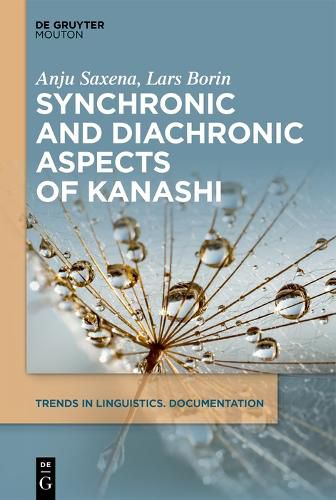Synchronic and Diachronic Aspects of Kanashi
Anju Saxena,Lars Borin

Synchronic and Diachronic Aspects of Kanashi
Anju Saxena,Lars Borin
This title is printed to order. This book may have been self-published. If so, we cannot guarantee the quality of the content. In the main most books will have gone through the editing process however some may not. We therefore suggest that you be aware of this before ordering this book. If in doubt check either the author or publisher’s details as we are unable to accept any returns unless they are faulty. Please contact us if you have any questions.
Kanashi, a Sino-Tibetan (ST) language belonging to the West Himalayish (WH) subbranch of this language family, is spoken in one single village (Malana in Kullu district, Himachal Pradesh state, India), which is surrounded by villages where - entirely unrelated - Indo-Aryan (IA) languages are spoken. Until we started working on Kanashi, very little linguistic material was available. Researchers have long speculated about the prehistory of Kanashi: how did it happen that it ended up spoken in one single village, completely cut off from its closest linguistic relatives? Even though suggestions have been made of a close genealogical relation between Kanashi and Kinnauri (another WH language), at present separated by over 200 km of rugged mountainous terrain, their shared linguistic features have not been discussed in the literature.
Based on primary fieldwork, this volume presents some synchronic and diachronic aspects of Kanashi. The synchronic description of Kanashi includes a general introduction on Malana and the Kanashi language community (chapter 1), linguistic descriptions of its sound system (chapter 2), of phonological variation in Kanashi (chapter 4), of its grammar (chapter 3) and of its intriguing numeral systems (chapter 5), as well as basic vocabulary lists (Kanashi-English, English-Kanashi) (chapter 9).
As for the diachronic and genealogical aspects (chapters 6-8), we compare and contrast Kanashi with other ST languages of this region (in particular languages of Kinnaur, notably Kinnauri), thereby uncovering some intriguing linguistic features common to Kanashi and Kinnauri which provide insights into their common history. For instance: a subset of borrowed IA nouns and adjectives in both languages end in -(a)n or -(a)s, elements which do not otherwise appear in Kanashi or Kinnauri, nor in the IA donor languages (chapter 6); and both languages have a valency changing mechanism where the valency increasing marker -ja alternates with the intransitive marker -e(d) in borrowed IA verbs (again: elements without an obvious provenance in the donor or recipient language) (chapter 7). These features are neither found in IA languages nor in the WH languages geographically closest to Kanashi (Pattani, Bunan, Tinani), but only in Kinnauri, which is spoken further away. Intriguingly, traces of some of these features are also found in some ST languages belonging to different ST subgroups (both WH and non-WH), spoken in Uttarakhand in India and in western Nepal (e.g. Rongpo, Chaudangsi, Raji and Raute). This raises fundamental questions regarding genealogical classification, language contact and prehistory of the WH group of languages and of this part of the Indian Himalayas, which are also discussed in the volume (chapter 8).
This item is not currently in-stock. It can be ordered online and is expected to ship in 7-14 days
Our stock data is updated periodically, and availability may change throughout the day for in-demand items. Please call the relevant shop for the most current stock information. Prices are subject to change without notice.
Sign in or become a Readings Member to add this title to a wishlist.

